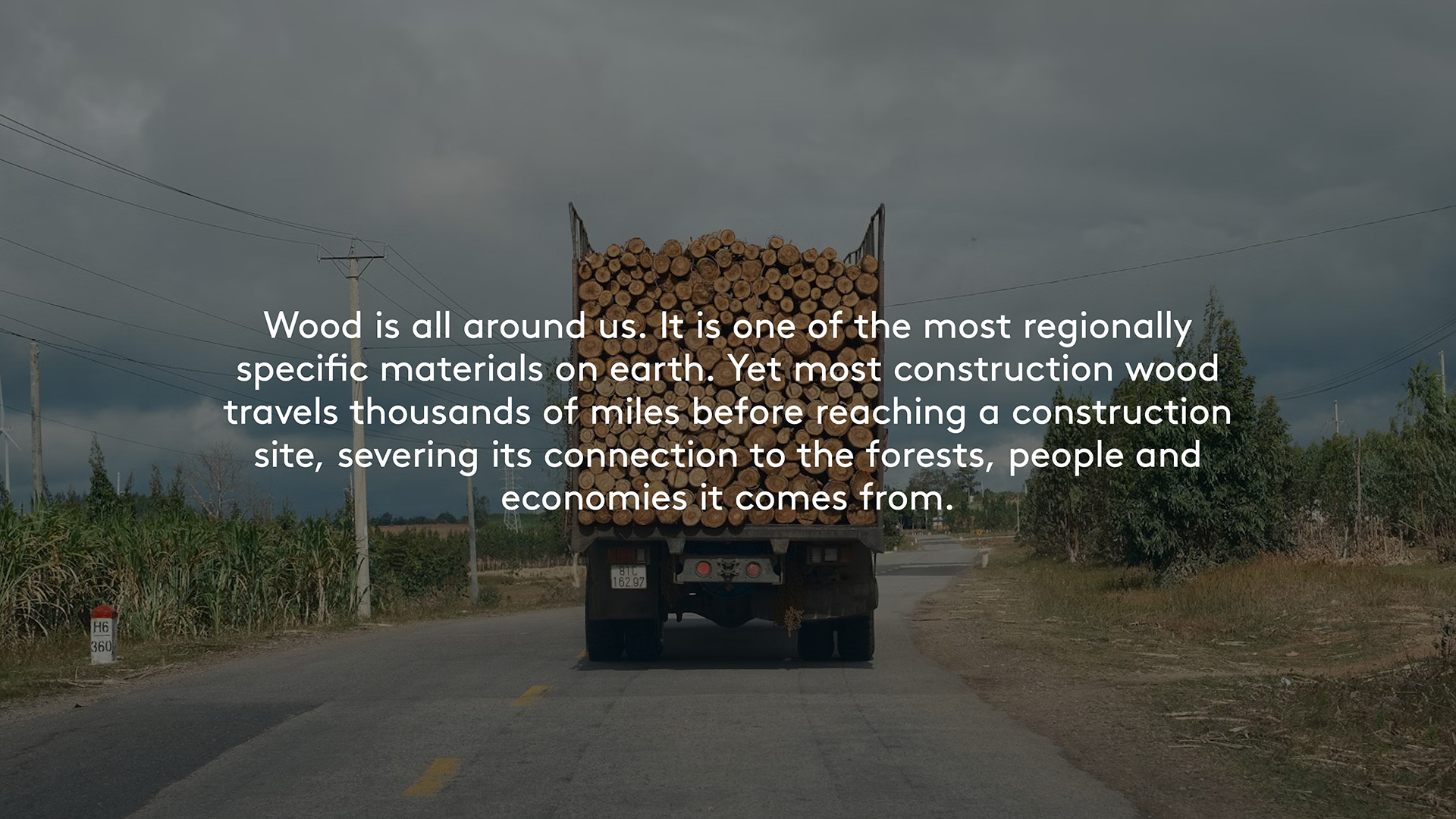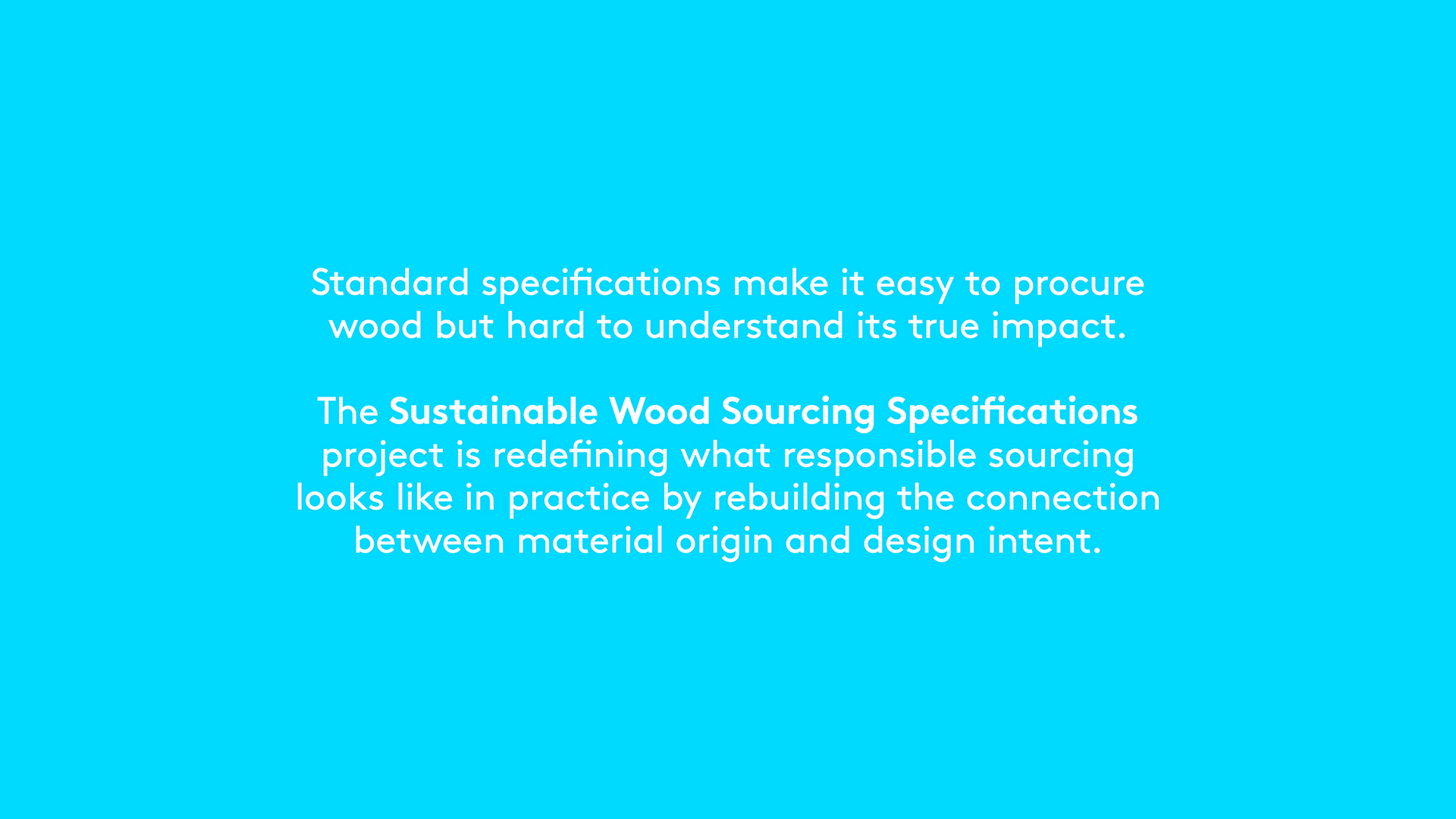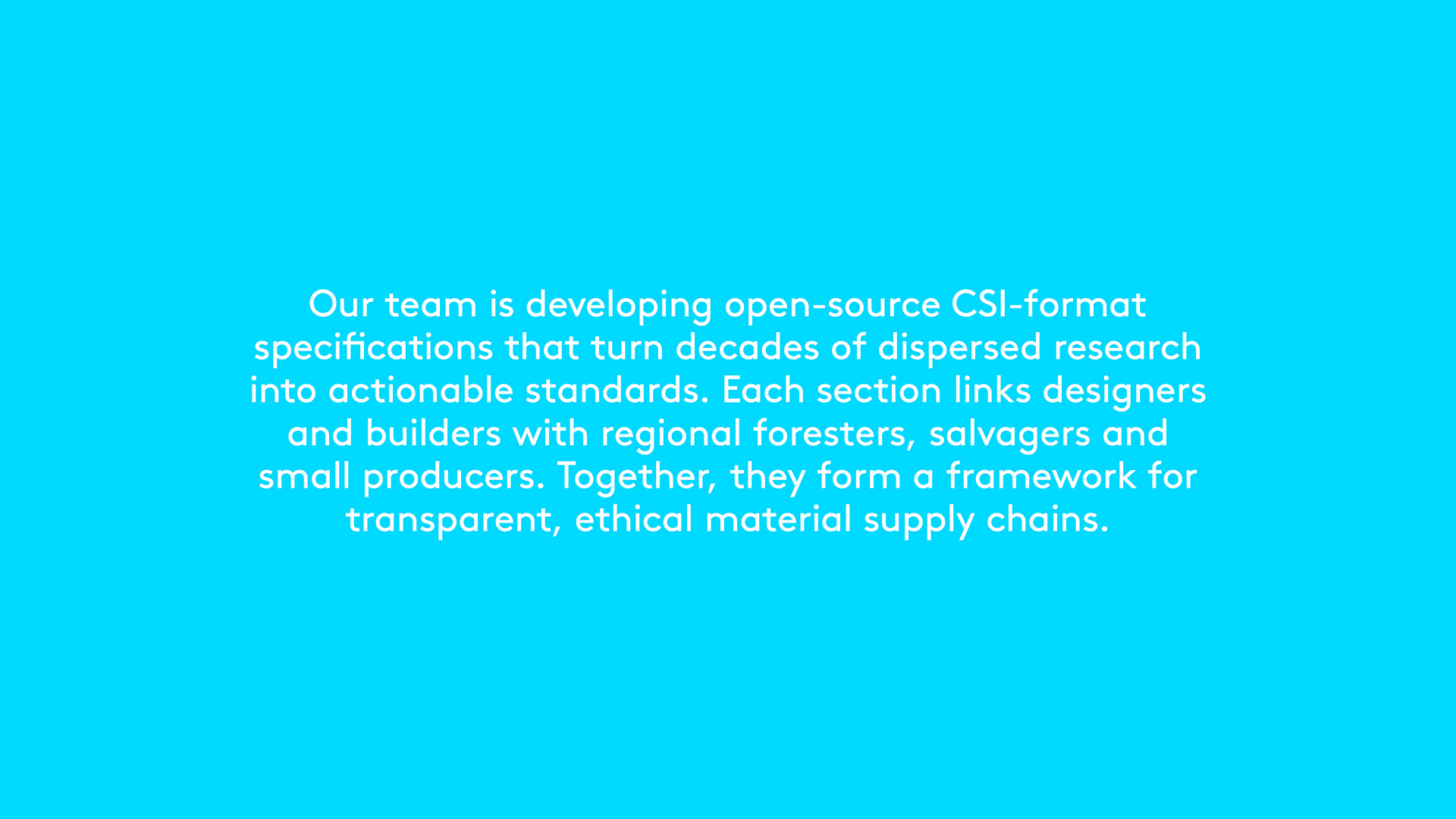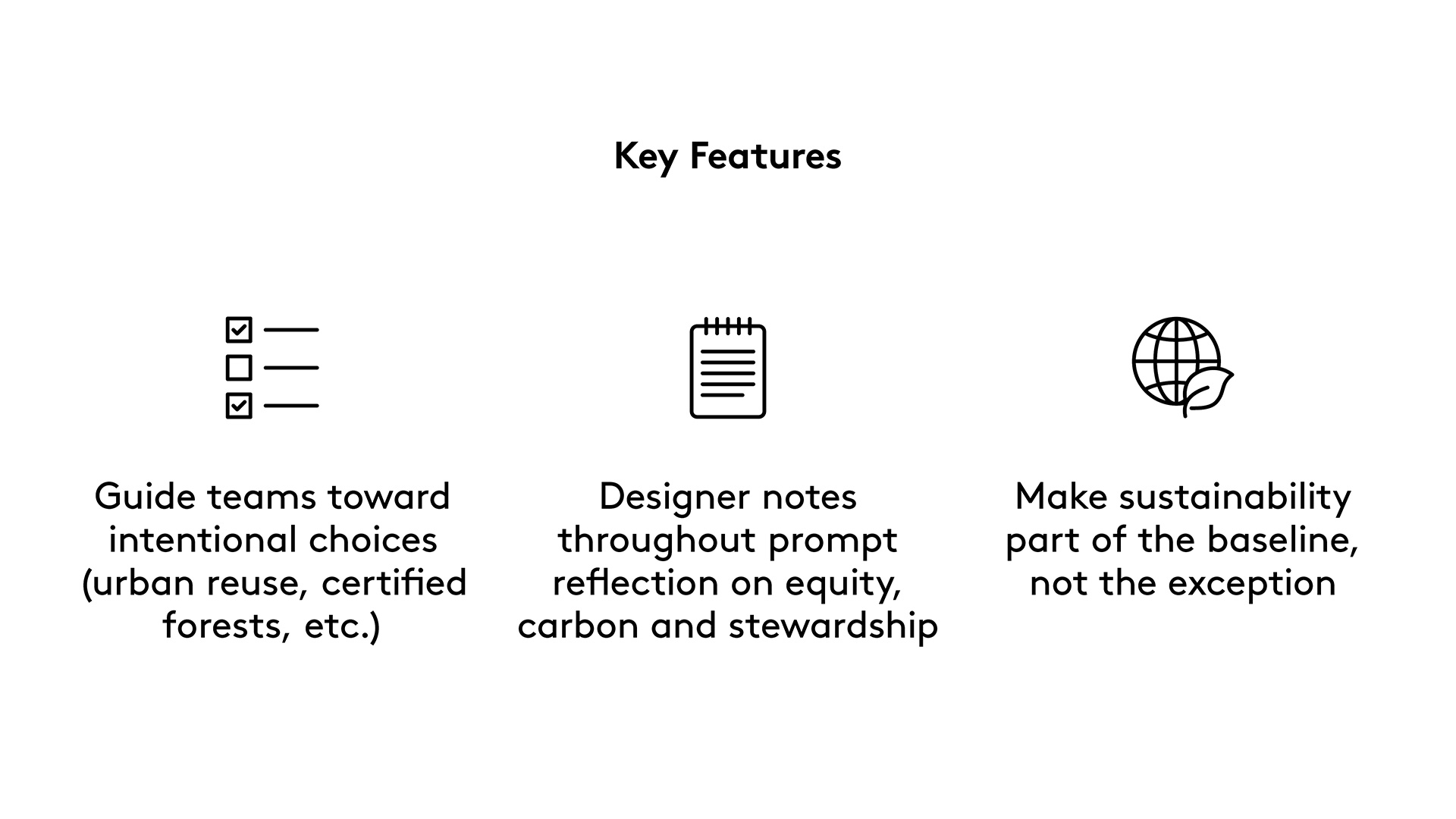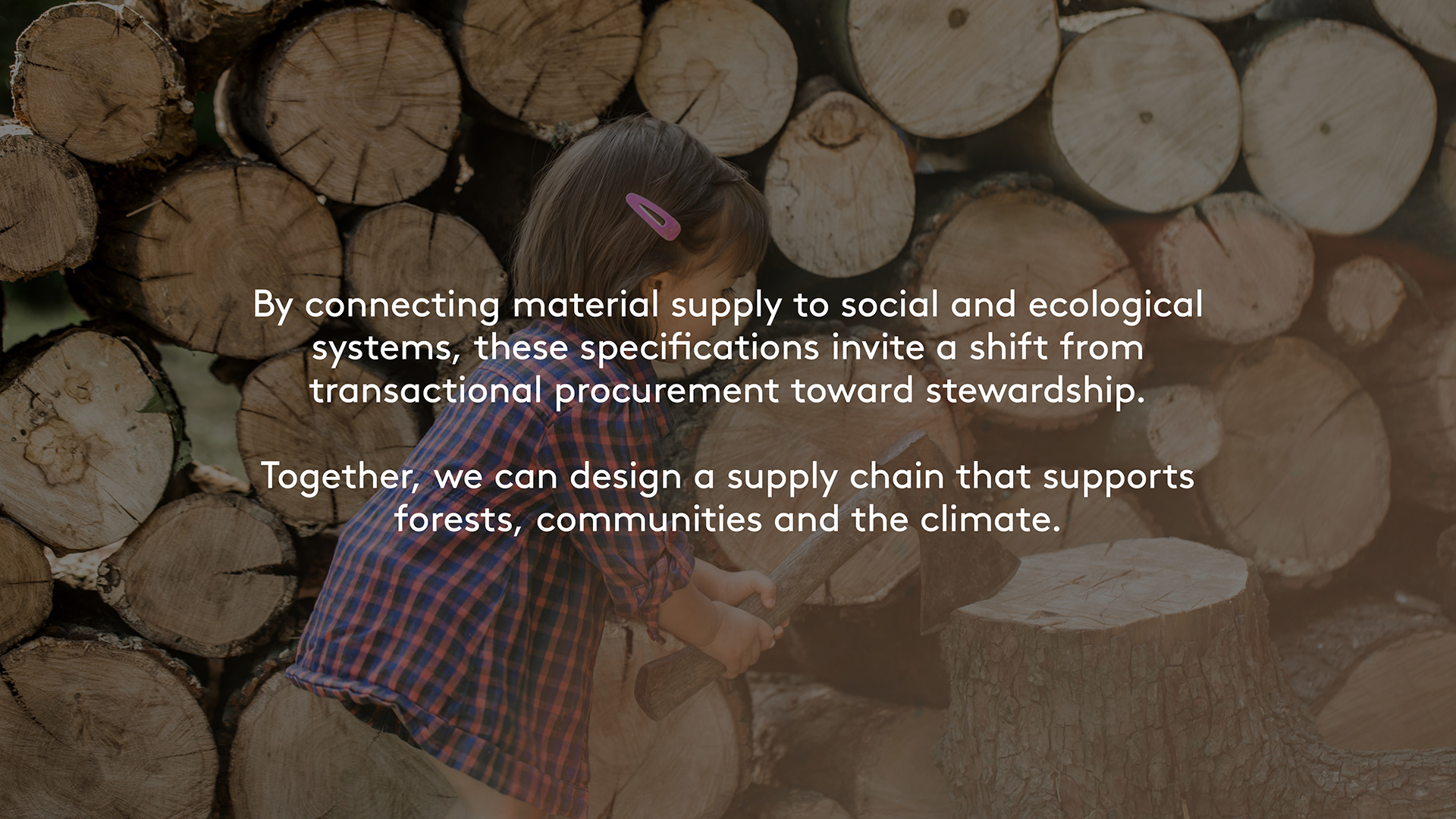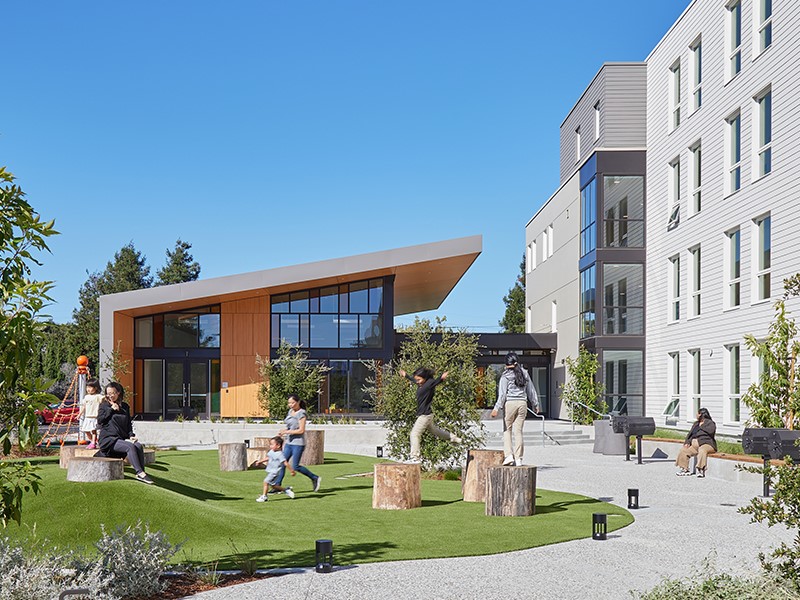Specifications for Timber and Wood Sourcing
Vision
Many projects have goals that might be furthered by procuring wood that comes with social or environmental benefits. However, because wood is a natural material with deep commercial, political and climate implications, specifying alternative, non-commodity material sourcing is an arduous and fraught task.
The Sustainable Wood Sourcing Specifications team is developing a series of interrelated specifications in the CSI MasterSpec format to offer designers and builders accessible pathways for intentional wood use or reuse to better serve projects, clients, forests and the planet.
Research
This Mithun R+D effort began with aggregating data and information from many expert sources over multiple decades. Previously, this information was dispersed and favored those who knew its parts and pieces. Business-as-usual commercial forestry typically lacked transparency that might allow specifiers to follow a road map to meet their wood-sourcing goals.
The Sustainable Wood Sourcing Specifications break down this compiled documentation into distinct but related sections to help guide designers through wood procurement. The team is reaching out to people who have experience in niche corners of the timber industry — salvagers, small fabricators, tribal land managers, conservation easement custodians, certified forest managers and more — to collate and make their knowledge and products more accessible. Key considerations, including both successes and lessons learned, are embedded in edit and designer notes to help prompt pivotal questions during the design process. Supplier names and/or sourcing entities will be written directly into specifications with full contact details to create clear procurement pathways.
This effort began in 2009 when an early wood network, Wisconsin Urban Wood, was formed in recognition of the abundance and potential for urban wood reuse. Fueled by a WI DNR Urban Forestry grant through the NRCS program (USDA Natural Resources Conservation Services), Dwayne Sperber contacted professional specification writer Gerard Capell (deceased) to sift through more than 2,000 board feet of salvaged, urban-sourced logs and lumber. In noting their collective observations paired with their professional expertise, they developed an urban wood specification, the first of its kind. Ron Burns, now retired from the design firm HGA, used this original specification to incorporate urban wood within interior projects and, in 2025, graciously shared the document with this team for use in this R+D effort.
Looking Forward
The Sustainable Wood Sourcing Specifications aim to provide "go-to" steps for specifying wood materials that are underutilized and often fed into waste streams, as well as to unify multiple industries of practitioners: designers, contractors, sawyers, millworking operations, fabricators and beyond. Approved materials meet criteria for use in a wide variety of specified applications from architectural and interior grade wood to landscape timber site elements. By collectively signaling a desire for responsibly managed forests and adding value to conserved wood fiber, individuals have the potential to transform the status quo of wood procurement in our industry.
Click here to download the preliminary specification for Salvaged Wood.

